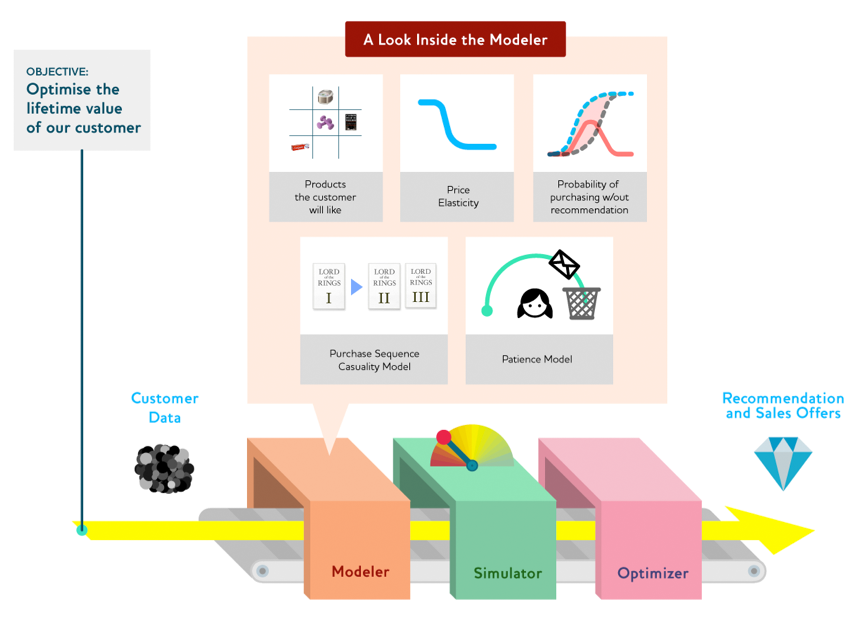5.4 Project management ML strategy: The Drivetrain Approach
The drivetrain approach was developed by Jeremy Howard, Margit Zwemer and Mike Loukides and published on (Howard, Zwemer, and Loukides 2012) and the O’Reilly web page in 2012. The goal of this method is
We are entering the era of data as drivetrain, where we use data not just to generate more data (in the form of predictions), but use data to produce actionable outcomes. (Howard, Zwemer, and Loukides 2012)
The method consists of four steps:
Four steps of drive train approach
- Start by defining a clear objective
- Specify what inputs of the system we can control, the levers
- Consider what data is needed
- Build the Model Assembly Line

The four steps in the Drivetrain Approach, figure from (Howard, Zwemer, and Loukides 2012)
The four steps are detailed in the following sections using examples
5.4.1 Recommendation system
Lets map the four steps to the topic “Recommendation system”
Mapping of steps
- Start by defining a clear objective
- Drive additional sales by surprising and delighting the customer with books he or she would not have purchased without the recommendation
- Specify what inputs of the system we can control, the levers
- Ranking of recommendations
- Consider what data is needed
- Reviews of books from customers
- Build the Model Assembly Line
- two models
- probability book bought without recommendation
- prob with recommendation
- difference between these two probabilities is a utility function for a given recommendation to a customer
- simulator
- run models for many books
- optimizer is ranking the books according to the simulations results
- two models
From the above it becomes clear that machine learning produces actionable outcomes, in this case a ranking of recommendations.
5.4.2 Exercise: Optimizing lifetime customer value
How can the example in chapter 5.4.1 be extended to the new objective optimizing lifetime customer value?
What are the leavers we got?
- We can make product recommendations that surprise and delight (using the optimized recommendation outlined in the previous section).
- We could offer tailored discounts or special offers on products the customer was not quite ready to buy or would have bought elsewhere.
- We can even make customer-care calls just to see how the user is enjoying our site and make them feel that their feedback is valued.
What about the data we need?
That can vary case by case. For example the company Outfittery asks the following questions to be able to optimize their recommendations.
- What do you like to wear in your spare time?
- What do you wear for work?
- Which shoes would you wear?
- What would you NEVER wear?
- Which brands do you like?
- How old do you feel?
A model assembly line could look like the following graph

Drivetrain Step 4: The Model Assembly Line. Picture a Model Assembly Line for data products that transforms the raw data into an actionable outcome. The Modeler takes the raw data and converts it into slightly more refined predicted data, figure from (Howard, Zwemer, and Loukides 2012)
To get the optimum of the objective the optimizer changes the levers (price, discounts, customer-calls). Those levers are inputs into the simulator, the simulation in turn uses the modeler to calculate the objective, here, the lifetime value of a customer.

Optimizer changes levers until simulation result is optimized. The simulation uses modeler to calculate the objective
The actionable outcome is a combination of
- Price tags for products
- Discounts
- Suggestions for customer-care calls